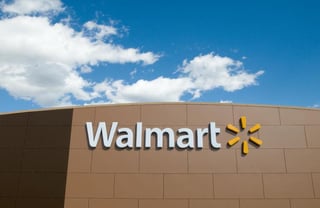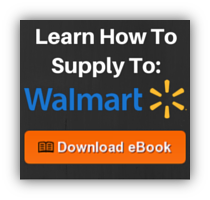We’ve had the good fortune of supplying many small companies with their flexible retail packaging that desperately want to sell to Walmart and larger firms that are already there and are adding part numbers, new flavors, and SKUs. I know both will agree that dealing with Walmart is not for the faint of heart. Don’t get me wrong, these companies aren’t complaining as the massive retailer is probably one of if not their biggest customer. However, Walmart is notorious for squeezing their suppliers and minimizing their costs as much as possible…and just when you think you’ve hit that point of “we can’t go any lower”, they’ll push for more (and often get it).

In yesterday’s Cincinnati.com there was an interesting article pertaining not only to Walmart but to Procter & Gamble, one of Cinci’s largest employers. Here the article mentioned how after 2007 Walmart was undercut by some dollar stores and even outmaneuvered by Kroger (another Cincinnati company) with larger selections and lower prices. The point that got my attention is something we have been stressing for a while now, retailers (not just Walmart) realize they’ve got to be aggressive and vigilant at constantly driving their costs down. They will pound and pound their suppliers for lower prices. (Image Source: news.walmart.com)
But what is a supplier supposed to do and how are they supposed to survive when every meeting and every contract is about lowering prices? In the same article mentioned above Ali Dibadj, a New York City based analyst for Sanford Bernstein mentioned to investors recently, “We get the impression from (Walmart) management that negotiations with suppliers will be tougher.” I can hear suppliers already saying, “Tougher…you are already cutting into bone!”
We believe we have uncovered a strategy for companies to not only satisfy Walmart and other retailers but to increase their bottom lines as well. This strategy was uncovered and used over the past year to help many of our clients not just survive but to thrive in a very competitive market. Many of our successes came from customers that are food marketing but this worked just as well with those dealing with pet supplies, coffee & tea, and even non-food items.
3 Things You Should NOT Do If Trying To Win with Walmart
- Use cheaper ingredients.
a. If you are in the food marketing business you know how quickly cheaper ingredients can affect the taste, aroma, and texture of your product. If your quality goes down, people won’t like your product and Walmart will say goodbye. - Cut corners
a. Similar to using cheaper ingredients but maybe you can find a faster way to pump out your product or use a lower grade manufacturing process. Again, ultimately consumers won’t want your product and either will Walmart. Not a good idea. - Do Nothing
a. Sure, you can sit around and sell at cost or below cost with Walmart (or other retailers) and hope to make up for it with other customers but we all know that strategy doesn’t work long term. Doing nothing is probably the fastest way to be out of business.
How Flexible Packaging Could Make a Difference for Your Company
Here are 3 options to consider pertaining to packaging:
- Examine alternative packaging solutions that use less packaging and/or less energy to make, ship, store, etc (lower cost).
a. Eliminate the glass bottles and jars and replace with thinner rigid plastic
b. Replace rigid plastic with flexible plastic (spouted stand up pouches for liquids, soaps, etc)
c. Reduce the thickness of existing flexible packaging with thinner materials but with higher barrier properties
***NOTE…just today it was announced that P&G was joining the FFRG (Flexible Film Recycling Group) and continuing efforts started in October of 2014 to use 20% LESS packaging. While I’m sure P&G is concerned with the environment you can bet your bottom dollar they are also looking at using less packaging as a cost savings! - Buy your own flexible packaging instead of buying it from your co-packer. This strategy is simple, easy to implement with no changes to your packaging or protection of your product, etc. Here is how this works:
a. Most companies use co-manufacturers and co-packers to make their product and package it as well as having them supply their packaging. While it easier to order from them, the co-packer/co-manufacturer is marking the packaging up…20%-30%! Why are you paying your co-packer a profit on your packaging?
b. Order the packaging yourself…let your co-packer/co-manufacturer concentrate on what they do best (which isn’t buying flexible retail packaging). You can use the same company they use or you can handle this yourself, either way you will be paying the true cost, not a marked up price.
***To be clear, we love co-packers and co-manufacturers, but they aren’t packaging professionals. Use a packaging professional and put that cost savings right to your bottom line (and have something to negotiate with when it comes time to renew contracts with Walmart). - Consider another supplier with domestic and overseas capability.
a. Domestic suppliers of flexible packaging generally have a shorter lead time but they are 25-35% more expensive than overseas suppliers.
b. Overseas suppliers can create amazing packaging with longer lead times (due to shipping only…handle the shipping/lead time and you’ve got a Win/Win)
c. Why not combine the two when needed and have a Supply Chain plan in place with the lower cost solution?
Scenario #1…domestic supplier can run retail packaging quickly (if needed) and overseas factory can take over once part number and SKU becomes viable and predictable.
Scenario #1a…overseas factory produces retail packaging and ships ONLY what is needed by Air and balance by boat.
Scenario #2…use an overseas supplier with US warehouse and US operations to hold inventory and release as you need it.- Lower per piece price (buying from overseas)
- Shipping Air from overseas is very competitive and often cheaper than running at domestic plant
- Better quality (Rotogravure printing versus Flexographic)
- No Set Up Fees (domestic suppliers charge set up, change fees, proof fees, etc)
- No inventory charges
- No holding charges
- Lead time only 1-2 days from US warehouse
- Overseas suppliers are way more flexible and willing to hold raw materials and product on their floor as well
- Lower per piece price (buying from overseas)
In closing, food marketing and dealing with retailers can be brutal and as mentioned before, it’s only going to get worse. Working with a packaging professional and taking time to understand how flexible retail packaging can work for you (cost savings, efficiency savings, dealing with major retailers) will have a significant effect on your bottom line and allow you to compete like never before. You can win at retail no matter how big or small the retailer is.






